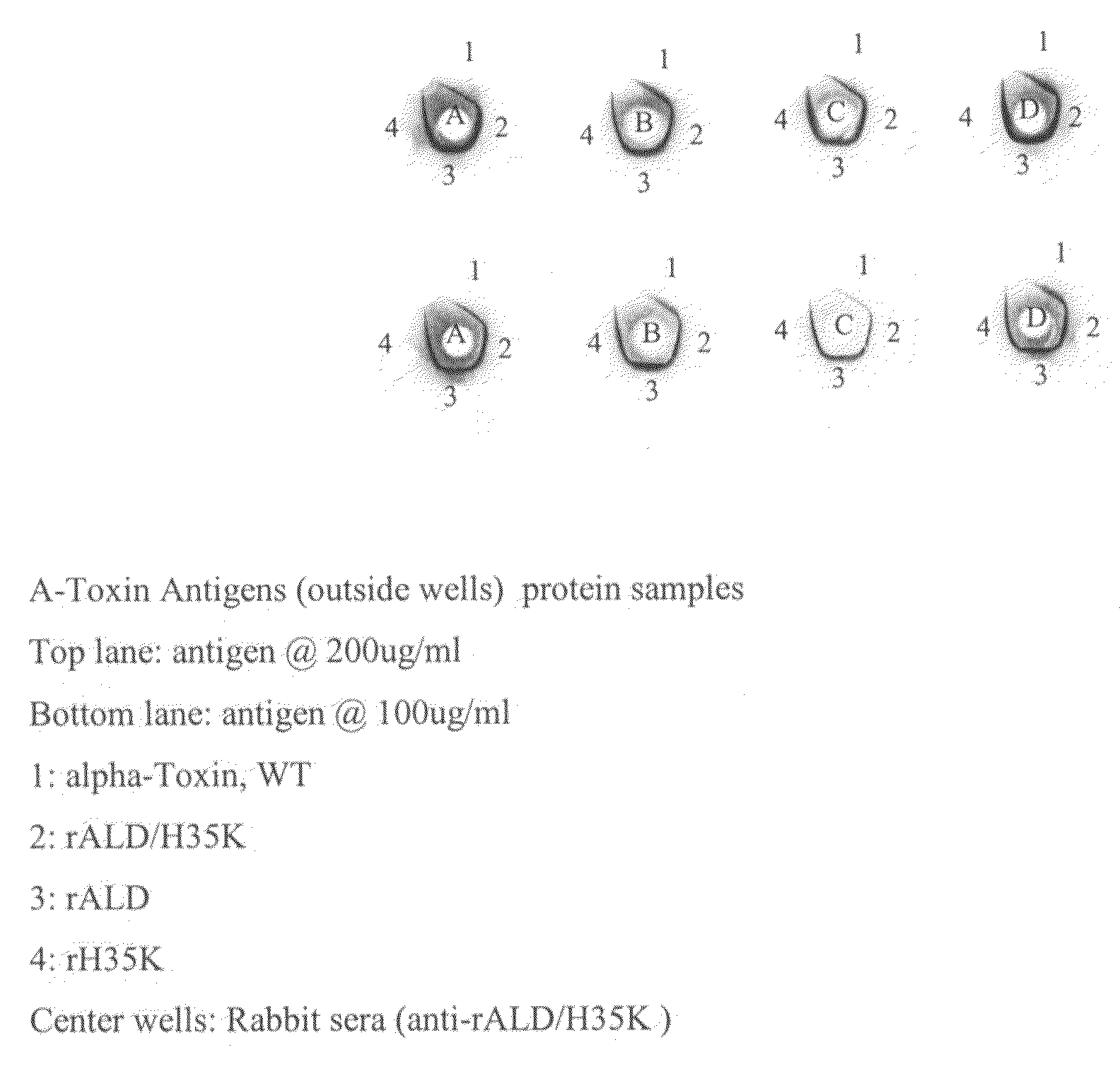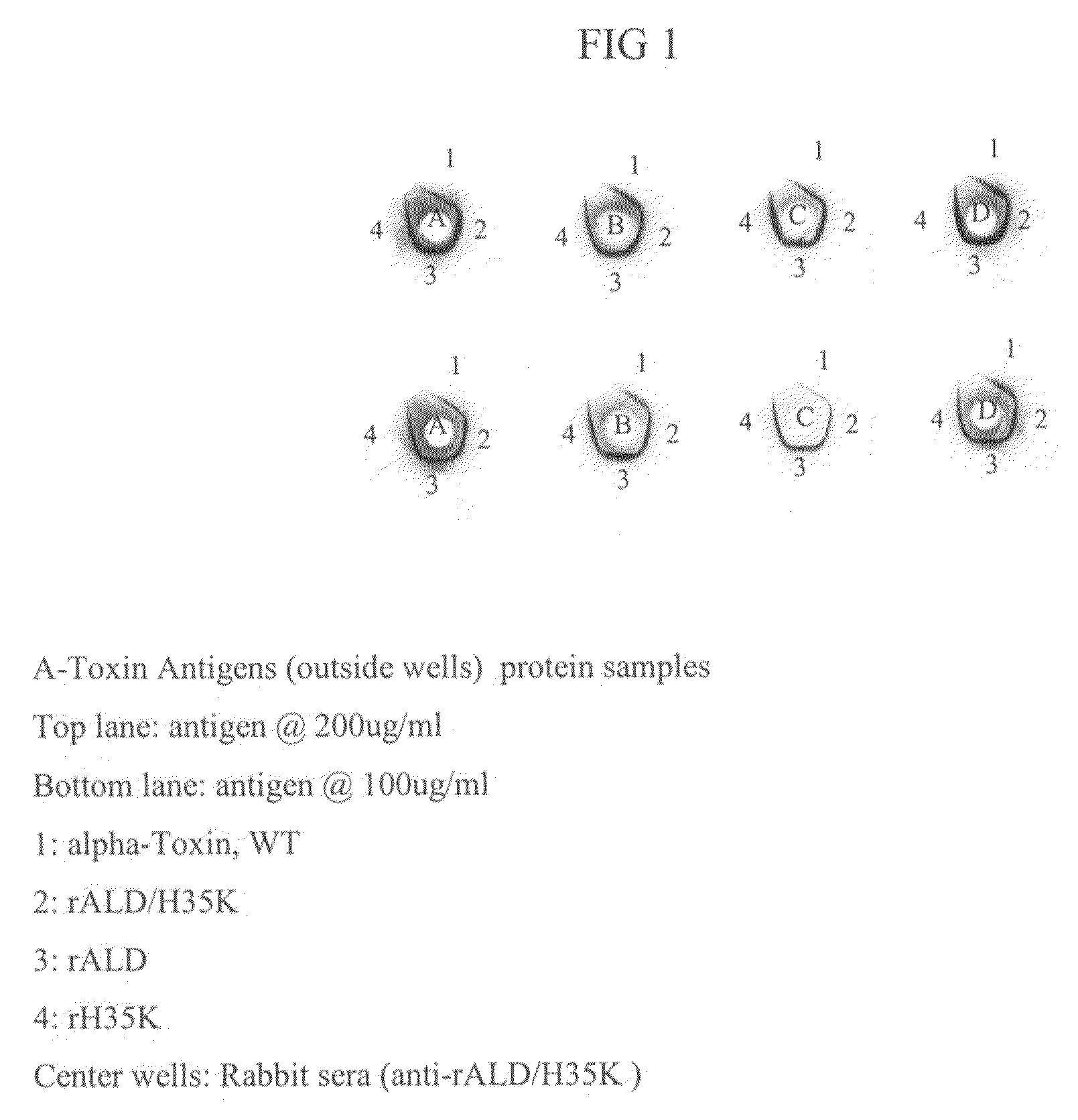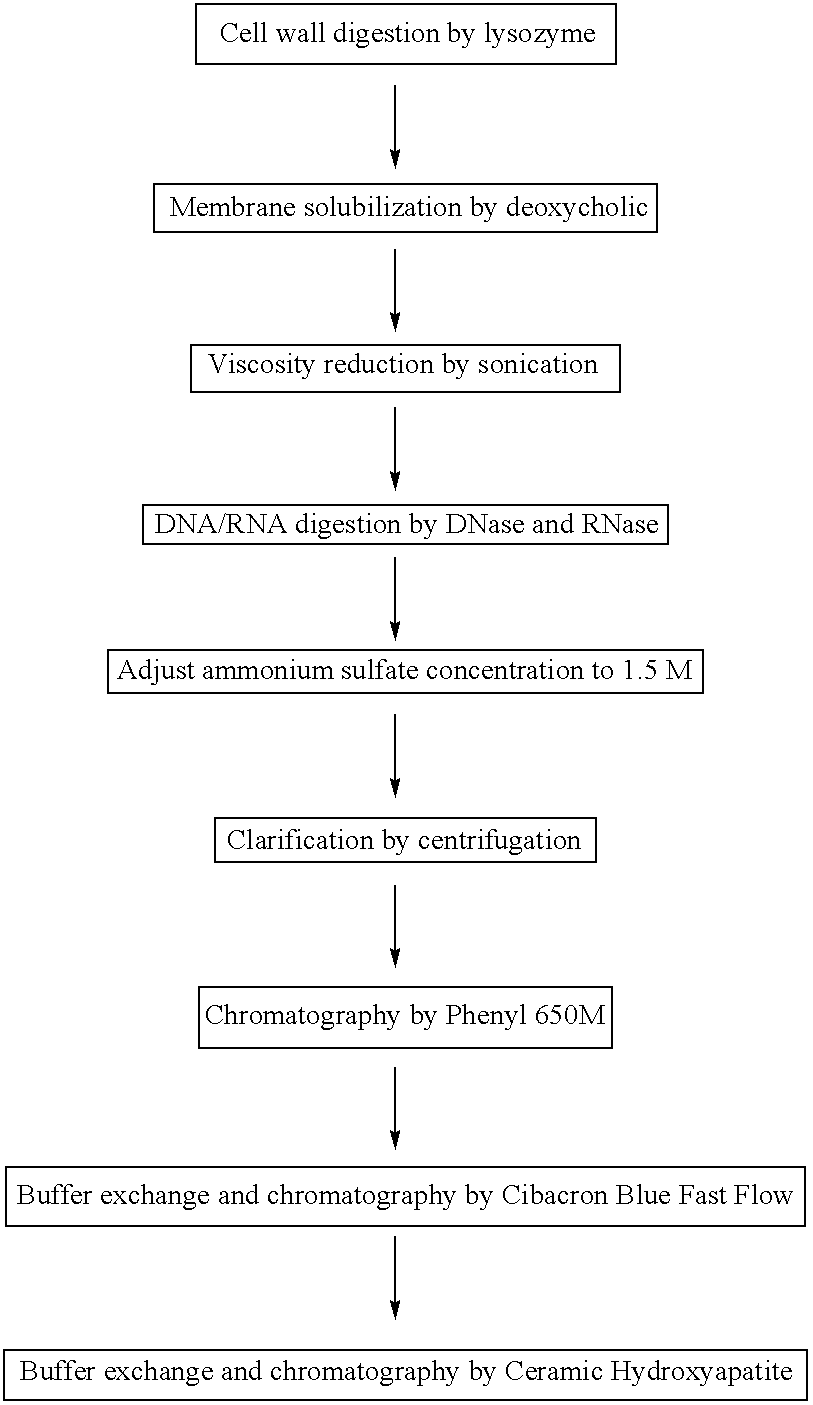Use of alpha-toxin for treating and preventing staphylococcus infections
a staphylococcus and alpha-toxin technology, applied in the direction of antibacterial agents, drug compositions, antibacterial ingredients, etc., can solve the problems of systemic infections increase the risk of infection, etc., and achieve the effect of reducing the toxic
- Summary
- Abstract
- Description
- Claims
- Application Information
AI Technical Summary
Benefits of technology
Problems solved by technology
Method used
Image
Examples
example 1
[0090]This example demonstrates the cloning and expression of a recombinant alpha-toxin mutant ALD / H35K (rALD / H35K) in Escherichia coli. rALD / H35K contains a deletion of the amino latch (ALD) and a point mutation at amino acid position 35, histidine to lysine (H35K).
[0091]An expression construct for recombinant alpha-toxin mutant protein rALD / H35K without a histidine-6-tag was prepared as follows. The ALD / H35K gene was PCR amplified from a previously prepared histidine-tagged construct, pTrcHis-ALD / H35K. Primers were designed to remove the histidine tag and incorporate NcoI and BamHI restriction sites at the amino and carboxy termini, respectively. After amplification and restriction digestion, the ALD / H35K gene was ligated into the Invitrogen pTrcHisB vector at the NcoI and BamHI restriction sites. By using the ATG of the NcoI restriction site for initiation of translation, the vector-encoded histidine tag and enterokinase cleavage site were removed. The result was the expression o...
example 2
[0095]This example demonstrates the construction of alpha-toxin mutants that lack the toxic or hemolytic activity of wild type alpha-toxin from S. aureus. Mutants His35 substitution / deletion, Amino Latch Deletion (ALD) and Stem Deletion (SDD) were constructed to disrupt the heptameric pore. These regions are believed to play critical role in pore formation. The mutants were made as recombinant proteins, and were constructed by PCR cloning techniques. The mutants were then IPTG induced to express the protein, which were evaluated for their toxicity / hemolytic activity.
[0096]Genomic DNA was purified from S. aureus Wood 46 strain using Wizard™ genomic DNA purification kit from Promega. PCR was performed using the primer combinations set forth in Tables 1 & 2 below.
TABLE 1SEQPrimerIDNameNO:SequenceKT0175′ GCATGCCATGGCAGATTCTGATATTAAT 3′KT0285′ CGTGGATCCTTAATTTGTCATTTCTTC 3′KT0395′GAAAATGGCATGAAAAAAGTATTTTATAG 3′KT04105′CTATAAAATACTTTTTTCATGCCATTTTC 3′AG01115′GGCAGCATGCCATGGCAGATTCTGATATT...
example 3
[0099]This example demonstrates the purification and characterization of rALD / H35K alpha toxoid without a his-tag.
[0100]Cells containing an expression plasmid and induced for the expression of rALD / H35K alpha toxoid were lysed with lysozyme. The membranes were then solubilized with deoxycholic acid (DOC). Viscosity of the cell lysate was then reduced by sonication, followed by a digestion of DNA / RNA with DNase and RNase enzymes. Cell debris was removed by centrifugation, and the supernatant containing the alpha toxoid was decanted for further processing. Chromatography was performed on the supernatant using a column packed with Toyopearl™ Phenyl 650M resin. The Phenyl 650 column fractions were analyzed by SDS-PAGE using a Coomassie staining method and pooled fractions, selected for purity and quantity of alpha toxoid, were subjected to diafiltration. Further chromatography was performed using a column packed with Amersham Cibacron Blue Fast Flow™ resin. The column fractions were aga...
PUM
| Property | Measurement | Unit |
|---|---|---|
| Volume | aaaaa | aaaaa |
| Volume | aaaaa | aaaaa |
| Volume | aaaaa | aaaaa |
Abstract
Description
Claims
Application Information
 Login to View More
Login to View More - R&D
- Intellectual Property
- Life Sciences
- Materials
- Tech Scout
- Unparalleled Data Quality
- Higher Quality Content
- 60% Fewer Hallucinations
Browse by: Latest US Patents, China's latest patents, Technical Efficacy Thesaurus, Application Domain, Technology Topic, Popular Technical Reports.
© 2025 PatSnap. All rights reserved.Legal|Privacy policy|Modern Slavery Act Transparency Statement|Sitemap|About US| Contact US: help@patsnap.com



